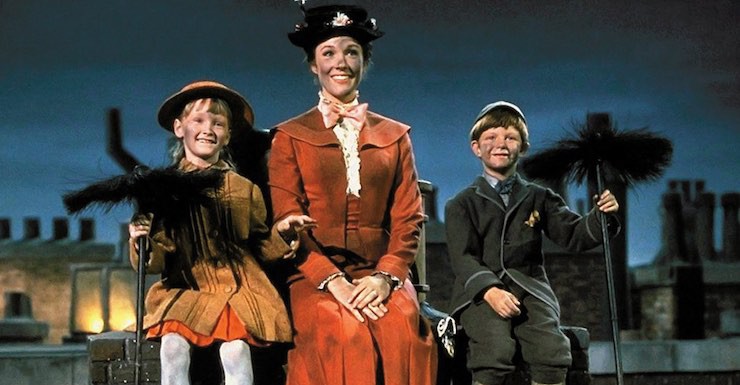When I was a little kid, I had an imaginary friend named Zolo who was a real asshole. Zolo was snub-nosed and furry. He had wings that didn’t seem to be operational—or if they were, they never seemed to function when I was around—and had a very long tail. He was brown and chubby, like an overfed bear—the tail and the wings and the distinctly nonbearish face notwithstanding. Also, he smoked cigarettes, one after another, which kids today probably don’t see in their imaginary friends, but I think was a fairly normal thing to a child of the seventies.
Zolo always had excellent ideas. Like the time I put peanut butter on the baby’s feet to see if she’d notice. (She did.) Zolo didn’t think I’d get in trouble. (You bet I did.) Or the time Zolo convinced me to turn my bed into a trampoline. (My nose is still crooked from the colossal crash.) Or the time I couldn’t open the porch doors made from ancient, wobbly leaded glass, and since my mom was changing the baby’s diaper, I backed up two rooms, held my arm straight out, and charged at the glass doors at a run. (The wood floor is probably still bloodstained after all these years, and I still have the scar, slithering like a snake down my arm.) Every time, there was Zolo, in the background, laughing.
Children’s literature, like my ridiculous childhood imagination, is lousy with helpmeets like Zolo—the enigmatic, the irascible, the incorrigible, the curmudgeonly, and the downright rude. And the sometimes dangerous. Perhaps this is because children, in their core, know that help can come from all kinds of people—even jerks. And that anyone, even a friend, should be regarded warily, like a beloved dog who sometimes bites.
Here are some examples:
Curmudgeonly Old Ladies with Axes to Grind
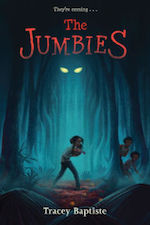 The White Witch from The Jumbies, by Tracey Baptiste
The White Witch from The Jumbies, by Tracey Baptiste
Whatever it is that you have or need, whatever it is that you think is your biggest, most intractable dilemma, the White Witch has seen it, done it, fixed it, and is so over it. Over a hundred years old and half jumbie herself, the White Witch is accustomed to living on the margins. She deals in magic and fixes problems… for a price. Does it matter that the people who come to her don’t really need her help, or that the thing they want will break them in the end? Meh. The White Witch is interested in making a living, keeping magic in balance, and being left well enough alone. So when Corinne, a motherless child with a jumbie problem, comes for help, the White Witch is not having it. At first. But then there is something strangely familiar about that girl. And the jumbie that is after Corinne’s family—and, indeed, possibly the whole island—well, there is nothing balanced about that, now is there? The White Witch might be persuaded to help… as long as no one pisses her off along the way.
Ancient Sand Fairies Who Wish You’d Bury Them Back in the Gravel Pit Already
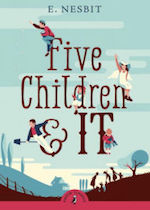 The Psammead from Five Children and It, by E. Nesbit
The Psammead from Five Children and It, by E. Nesbit
As soon as the children uncover the sand fairy—or Psammead—in the gravel pit, he insists that they bury him right back this second. And he also tells them that they have rubbish in their heads. In fact, he can hardly open his mouth without hurling yet another insult. Astonishingly, the children convince him to grant their wishes, which he does, knowing that anything they wish for will disappear when the sun sets. Drawn together partly by boredom, partly by malevolence, and partly by curiosity, the sand fairy and the children find themselves in a series of ridiculous situations, the Psammead grumbling all the while.
Negging Nannies on Ill-Conceived Magical Adventures with Built-In Plausible Deniabilty
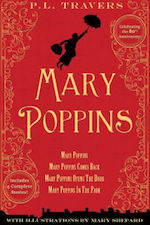 Mary Poppins, by P. L. Travers
Mary Poppins, by P. L. Travers
The saintly and genius Julie Andrews and her practically perfect adaptations of basically every role ever devised for stage or screen notwithstanding, the fact is that the book version of Mary Poppins, magical nanny and possible childhood ruiner, is a pretty big jerk. “I hate being good,” she tells Michael. And she means it. She gives the children strange concoctions from an unmarked bottle and takes them into unknown neighborhoods in the company of strange men who have not been introduced to their parents. She brings the kids to little old ladies who glue stars onto the sky (using ladders, of course) and who break off their own fingers to give to hungry babies to eat (they’re made of marzipan, you see). She then gaslights the children to disbelieve their own reality, insisting huffily that the thing they experienced never happened at all. And then, right when they get used to her, she abandons them. Like a jerk.
Impossibly Adorable Boyfriends with Hidden Agendas and Mad Mother Issues
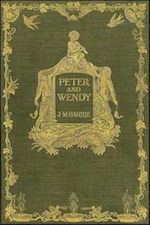 Peter and Wendy, by J.M. Barrie
Peter and Wendy, by J.M. Barrie
Look, I know what you think about Peter Pan, but you are wrong. The main character is not Peter: it’s Wendy. Wendy’s the one who follows the Hero’s Journey Call to Adventure. Wendy’s the one who is a stranger in a strange land. Wendy is the one who must seek assistance. And Wendy is the one who returns home forever changed. The disruptor in her story is Peter: the guy who convinces her to break the rules, the one who goes into her room at night (!!!), gives her some kind of substance that makes her feel just lighter than air, and whisks her away. Once she finds herself trapped in the fascist hellscape of Pan’s Labyrinth—oh, I mean Neverland—where Peter is sole ruler of his army of kidnapped children and will be forever, Wendy must act as mother to the Lost Boys, pantomiming a dim memory of a memory, a paper-doll mother. This is not to say that Peter doesn’t help her along the way; he does. And he certainly makes Wendy’s adventure possible. Still, he is selfish, bullheaded, sociopathic, manipulative, and, yes, irascible. To the core.
Do Not Open the Door When Your Mother Is Out
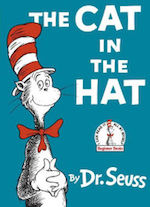 The Cat in the Hat, by Dr. Seuss
The Cat in the Hat, by Dr. Seuss
I don’t know about you, but the Cat in the Hat freaked me right out as a child. Possibly because of his similarity to my own off-putting imaginary friend, Zolo. Let’s sum this story up: The Cat breaks into the house with a large bang. He juggles the furniture. He trashes the house. He plays with paint. He brings friends in and throws a party. And he ridicules and demonizes the only responsible child-minder in the building. (Granted, who hires a fish for a babysitter, anyway? Can a fish change diapers? Or perform the Heimlich maneuver if need be? Or make dinner? Pretty sure not.) The Cat is unabashed, distilled id, and generally the worst. And yet. Not boring. Not in the least.
In the end, though, what these characters offer to a child’s imagination is, yes, malevolence and, yes, crankiness and, yes, selfishness and insults and grumpy buffoonery, but primarily they offer Chaos. Now, Chaos gets a bad rap in literature (hello, Trojan War!), but Chaos is the dominant reality of our beautiful universe. We live in Chaos, we make sense in Chaos, we build our lives on a thin veneer of solidity, a lace of matter masking the Void. By inserting Chaos into Story, we are actually giving kids a valuable tool. The world is prickly, kids. And rude. And frightening. And unknowable. And dangerous. And wild. Go have fun anyway.
Top image: Mary Poppins (1964)
 Kelly Barnhill writes novels for children and short stories for adults and poetry that she whispers in the dark when no one is listening. The Witch’s Boy received four starred reviews and was named a best book of the year by the Washington Post, Kirkus Reviews, Publishers Weekly, and Chicago Public Library. The Girl Who Drank the Moon, her most recent novel, has received five starred reviews to date and is now on sale from Algonquin Young Readers.
Kelly Barnhill writes novels for children and short stories for adults and poetry that she whispers in the dark when no one is listening. The Witch’s Boy received four starred reviews and was named a best book of the year by the Washington Post, Kirkus Reviews, Publishers Weekly, and Chicago Public Library. The Girl Who Drank the Moon, her most recent novel, has received five starred reviews to date and is now on sale from Algonquin Young Readers.










